Over at CTD, I see this article:
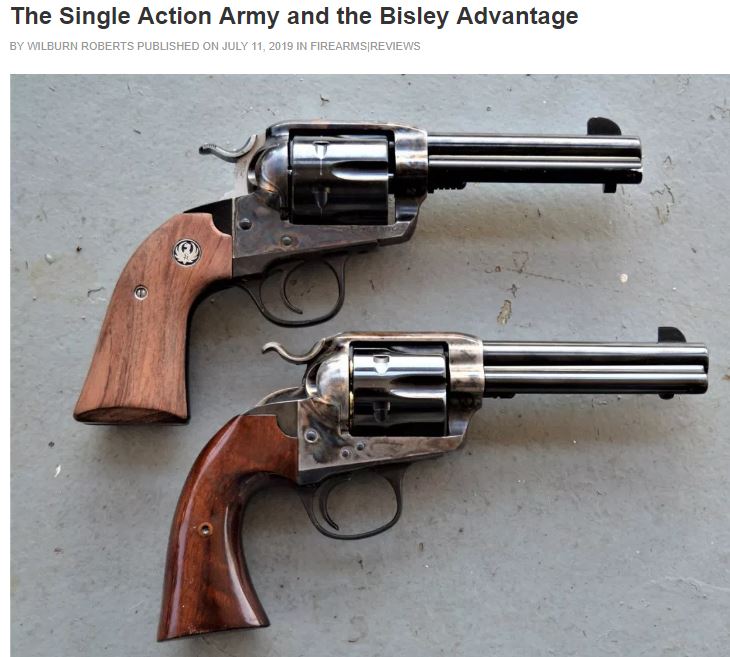
II have to confess that I’ve owned several “Bisley-gripped” revolvers, and I was never able to shoot any of them for shit. Something about that upright grip angle made me shoot high — not the first shot, but by the third trigger-pull I’d be missing way high. The Bisley grip never felt quite comfortable in my hand, and so over time I got rid of all of them because there’s no point in keeping a gun you can’t shoot accurately, is there? (Especially when someone else absolutely loves shooting my old Ruger revolvers and has never stopped thanking me for swapping them with him. )
As a matter of fact, I shoot the “regular” Ruger grips a lot more comfortably (and hence more accurately), and ditto the Smith & Wesson’s. Here’s my GP100:
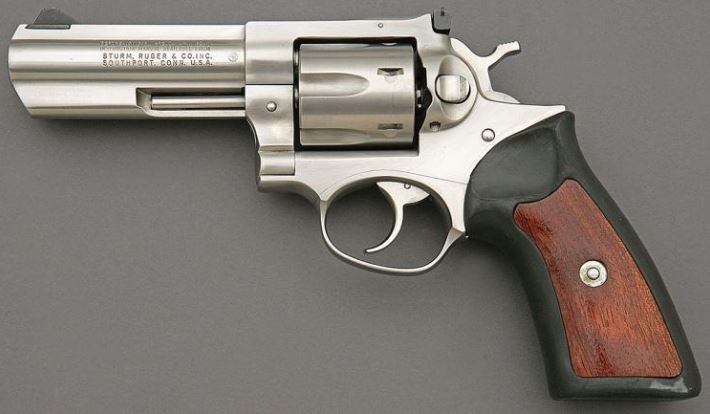
…and my Model 65 (sob):
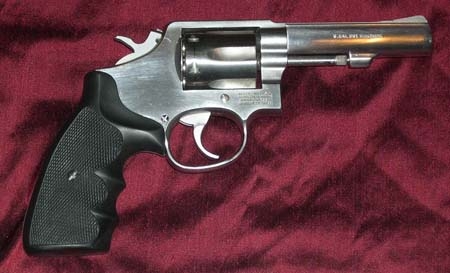
I have the same issue with the Luger-style (which is raked too much in the other direction) and the 1911:
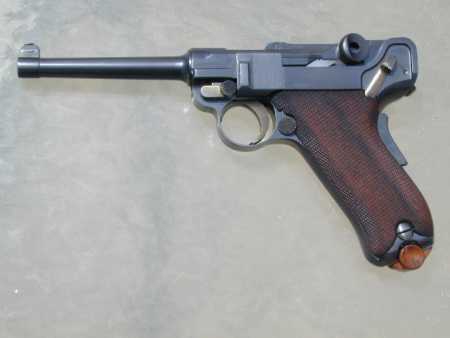
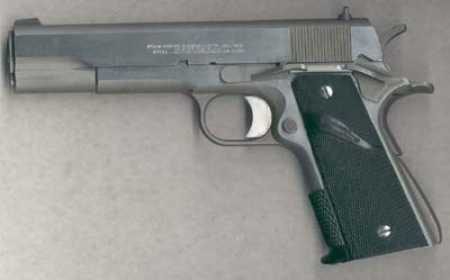
The Luger doesn’t work for me, and the 1911 does.
It’s strange how just a couple degrees’ difference of rake in the grip can make such a difference. Then again, I seldom shoot “hot” loads (as Roberts does, apparently). The hottest handgun round I’m prepared to shoot is the “regular” 240-gr .44 Magnum (in the right-sized revolver, i.e. Blackhawk/Redhawk). Forget that .500 S&W nonsense:
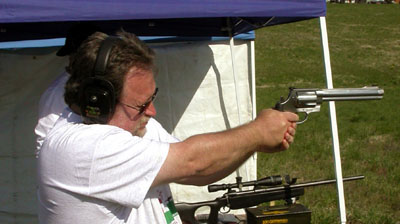
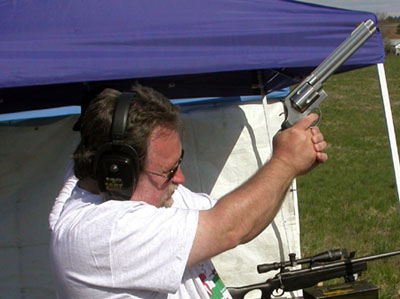
Yeah, I’m a recoil wussy. Sue me.

I have a bunch of Ruger revolvers, and love shooting them. When I got my old .30 carbine Blackhawk (thanks yet again for being a bad influence, Kim!), it came with Pachmayr grips. I wound up putting Pachmayrs one nearly every one of them, including my GP100. I was never a fan of the original rubber and wood paneled grips on the GP, they just didn’t work for me. The Pachmayrs fill the hand nicely, but aren’t fat in the hand like the Hogue grips. IIRC I had the Gripper grips on the gun for years, and switched to the Diamond Pro grips a few years ago. The Diamond Pros are a bit fatter than the Grippers, but not objectionably so. I have their Presentation grips on all the Blackhawks, which work well on all but the .44 magnum–the square backed trigger guard doesn’t work very well with the Presentations.
https://www.lymanproducts.com/brands/pachmayr/handgun-grips/revolver-grips?make=209
+1. Except for the Glock, I purchased Pachmayr’s with or shortly after every handgun I’ve ever bought.
I have weird hands, so the Luger-type grips are more comfortable to me. My favorite grips are on the Beretta Neos, which has a very steep angle, compared to pretty much every other pistol I’ve seen.
Hmmm…no, I would argue that if the Luger grip is more comfortable you probably have “normal” hands. The Parabellum (Luger) grip is, IMO, the most “natural” angle for most shooters. And contrary to what some may think, there are a LOT of guns that use the “Luger-type” angle: The Ruger .22 semi autos, the Japanese Nambu, the Finnish/Swedish Lahti (one of my favorite obscure guns), and (here come the jeers….) the Glock*.
I’m not 100% sure but I wouldn’t be surprised if the lesser grip angle on the 1911 wasn’t for comfort or utility but rather for better feeding and function. The more sharply angled the grip, the more friction the cartridges will have against the front of the magazine, which can lead to a malfunction (especially with the state of metallurgy available to designers in the early 20th Century.) IIRC when the Parabellum was first marketed it was sold with the understanding that only certain bullet styles would would – I think a conical FMJ that had the minimum surface area in contact with the front of the magazine. Since the P08 was literally the first gun to use the 9mm Parabellum cartridge, they could spec it out however they wanted, but once 9mm Para became a “European Standard” other styles of bullets became more common.
Note that Germany replaced the P08 with the P38 just before WWII, and the P38 has a similar, less “severe” grip angle than the P08. Again, if I was a bettin’ man, I’d bet that the reason they did that was not because it was easier to shoot (as I’m sure it was not) but rather because it made the pistol feed cartridges more reliably.
* NOTE: I’m sure someone will accuse me of being a Glock fanboy but IMO the success of the Glock is at least partially attributable to the grip angle which makes it easier to shoot than the 1911-type angle which requires, at least initially, a shooter to consciously rotate his wrist upwards in order to sight in. Obviously with practice this becomes second nature but to a new shooter it can make a difference.
The Luger, Ruger .22 and the Glock’s are the only common handguns with that extreme grip angle. The rest are not what could be called common or mainstream.
The one attribute they share is that this is the limit of most human’s wrist deflection downward. It appears to offer some remedy to limp-wristing for the average shooter, since they are no longer trying to stabilize the wrist in all three arcs of travel with just muscle tension, but can butt up against a joint stop for stability.
One of the odd things is that you would think this would eliminate the tendency of people to shoot low in real gunfights, but visual and physical evidence shows this to be untrue. I suspect this is a result of not actually using the sights, but point-shooting in the heat of the moment. Surveillance videos seem to bear this out.
Only a shooter that has primary experience with a Luger type grip angle would have to consciously adjust his point of aim upwards to remove that extreme wrist angle when switching to a 1911 or other typical handgun grips. Those of us that would regularly switch between them don’t seem to have a noticeable problem in this regard.
I had the Ruger Vaqueros and later the Ruger New Vaqueros for single action shooting, and they were both great. I borrowed a Bisley grip revolver for a three gun stage and had the same problem keeping it on target.
I may be wrong (and I’m too lazy to Google it), but my understanding was that the Bisley grip was developed to assist in a very particular shooting style and stance that was popular with target shooters in the late 1800’s. It was not designed nor intended to be used for regular shooting, 3-gun matches, cowboy shoots, etc. Unless one is strictly using that particular stance, the Bisley grip is actually a hindrance. Why it’s still popular is something of a mystery. That said, I’ve never shot a Bisley style revolver though I’d love to try. My regular grip single actions shoot just fine, though. My 3-screw Blackhawk in .357 can routine hit beer cans at 100 yds, at least when I used to practice more regularly.
Grips are something that take getting used to. But the Bisley grips…they can keep. I’ll take the lower Bisley hammer, but not the grips.
There’s a trick to the SAA and similar grips. Put the little finger under the grip. This will position the gun properly.
I really prefer the grip angle on the GP100 to the Bisley, although I found the factory grips to be a little small. I put a Hogue Monogrip on it.
https://static.wixstatic.com/media/73613b_f83d0aa6664a4547aeb0f219458f7fb0~mv2.jpg/v1/fit/w_498,h_498,q_90/file.jpg
A visitor touring the gun-shop yesterday, and admiring some Uberti-made hog-legs noted something that had not previously occurred to me.
The SAA, with its 7.5″ bbl, pointed much more naturally than the 3.5″ ‘belly-gun’, and I remembered a range session with a 4.75″ “Rooster-Shooter” where it was a real struggle to get the group down into the 10-ring.
Now, that particular SAA has never been shot (by me) and was acquired to complete an “outfit”, but perhaps I should get another just for “use”?
Those Bisleys sure are pretty, though.
I think the droopy hammer contours are really sexy.
The grips look nice, but they are too much like choking up on a baseball bat.
I like finger groove grips on a S & W N Frame (I have a nice collection of these).
I also like Dan Wesson revolvers (got some pretty older ones and one of the new Model 715’s (I think that’s it, at least).
And, of course, I love Pythons.
I have plenty of 44 mags, but I seldom shoot them.
I just like to shoot 38 sp ammo through a 357 revolver.